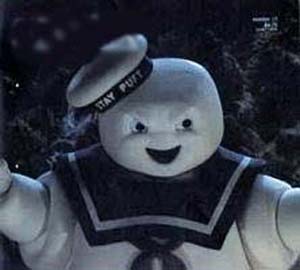house alarm security

Bottom Line: Honeywell's Smart Home Security Starter Kit is a DIY system that includes Amazon Alexa service, a built in 1080p camera, motion detection, face recognition, and more.
security services houston

It seems as if scammers and schemers are using the Internet to entice and tempt wood be small business owners into becoming involved in shipping services.
Have a Question?

"I can't tell you how many times whether it's a trip across town or across the country where I've had that 'ah ha' moment where I didn't turn on my security system," Mathew said.
Google Advertising

Archives
Links
Tags
security camera dallas
2011
 Sign a contract with the company you want to promote. Make a business plan. Once you have decided upon the type of home security system you will deal in, you will then be able to determine how much capital you need to raise and whether you have enough funds to do it yourself. Consider whether you can fund your security system dealership yourself through personal funds or credit cards, or whether you should instead secure a small business loan. To obtain a small business loan, you will need to write a business plan to show how your business will succeed and what it will entail see Resources for links to help in writing a business plan and to obtain loans. Many surveillance cameras and audio bugs emit radio waves and can be identified by a standard RF radio frequency detection device. Conduct a “sweep” of your home with your bug detector. Surveillance devices are often hidden in walls or ceilings, so look for any spots that appear to be spackled or recently concealed. However, with the decreasing size of surveillance equipment, illegal surveillance can be concealed virtually anywhere. Household objects such as pens, clocks, lamps and even watches may contain devices to see and hear what you are doing. Closely examine your home's windows, as the exterior of windows are excellent places for installing illegal surveillance devices since no one has to break into your home to install them.
Sign a contract with the company you want to promote. Make a business plan. Once you have decided upon the type of home security system you will deal in, you will then be able to determine how much capital you need to raise and whether you have enough funds to do it yourself. Consider whether you can fund your security system dealership yourself through personal funds or credit cards, or whether you should instead secure a small business loan. To obtain a small business loan, you will need to write a business plan to show how your business will succeed and what it will entail see Resources for links to help in writing a business plan and to obtain loans. Many surveillance cameras and audio bugs emit radio waves and can be identified by a standard RF radio frequency detection device. Conduct a “sweep” of your home with your bug detector. Surveillance devices are often hidden in walls or ceilings, so look for any spots that appear to be spackled or recently concealed. However, with the decreasing size of surveillance equipment, illegal surveillance can be concealed virtually anywhere. Household objects such as pens, clocks, lamps and even watches may contain devices to see and hear what you are doing. Closely examine your home's windows, as the exterior of windows are excellent places for installing illegal surveillance devices since no one has to break into your home to install them.Gulf State MortgageGVC MortgageH and L MortgageH. O. M. E. CompaniesHallmark Home MortgageHalo CapitalHalo Group Mortgage, LLCHamilton Funding Group IncHamilton National Mortgage CompanyHana Financial, IncHancock Mortgage Partners, LLCHarbor Mortgage SolutionsHarlequin Capital CorpHarpeth MortgageHartford Financial ServicesHarvard Home MortgageHawaii Mortgage ExpertsHeartland Home Mortgage LLCHendry Home Mortgage, LLC Heritage Mortgage Banking CorpHerring BankHFCHighland Mortgage Group LLCHighlands Residential MortgageHightech LendingHilco Mortgage Corp. Hollander Financial Holding, Inc.
house alarm security
2011
 A raging debate between various companies world wide tries to advertise and endorse their methods of cleaning to convince a consumer and potential customer that their method of cleaning is superior. Rather than writing a very obvious slanted article, I realized that simply stating what the advantages and disadvantages of each cleaning method is, would allow the consumer or potential customer to decide for themselves as to which cleaning method would best serve them. Yes, I can admit that every cleaning method has a clear advantage and disadvantage. Although I would love to make every consumer and or potential customer our customer, the reality is that many factors affect where a consumer or potential customer turns to for their indoor air quality needs. The power vacuum/air sweep method involves a powerful large diameter vacuum hose generally ranging in diameter from 8” 12” that moves anywhere from 3000 CFM – 26,000 CFM cubic feet per minute of negative air draw depending on the type of power vacuum machinery being used. Typically speaking, having power vacuum machines that moves anymore that 10,000 CFM is foolish, considering the fact that all ductwork is rated for a set amount of CFM based on the size of the ductwork through external static pressure ratings, velocity and ambience. I do have to admit that the more power a vacuum has, the cooler it is to witness, though. The power vacuum hose is typically installed into the ductwork via a circle cut out which allows for the power vacuum to put the entire side of the ductwork under a complete and sound vacuum draw. By doing so, every vent attached to the ductwork will have a centrally created vacuum present for proper system containment. From there, various mechanical brushes are sent down the rounds to break and push all debris down to where the power vacuum is sucking. Afterwards compressed air ranging from 150 psi – 250 psi air washes anything left by the brushes, to thoroughly and completely clean the round.
A raging debate between various companies world wide tries to advertise and endorse their methods of cleaning to convince a consumer and potential customer that their method of cleaning is superior. Rather than writing a very obvious slanted article, I realized that simply stating what the advantages and disadvantages of each cleaning method is, would allow the consumer or potential customer to decide for themselves as to which cleaning method would best serve them. Yes, I can admit that every cleaning method has a clear advantage and disadvantage. Although I would love to make every consumer and or potential customer our customer, the reality is that many factors affect where a consumer or potential customer turns to for their indoor air quality needs. The power vacuum/air sweep method involves a powerful large diameter vacuum hose generally ranging in diameter from 8” 12” that moves anywhere from 3000 CFM – 26,000 CFM cubic feet per minute of negative air draw depending on the type of power vacuum machinery being used. Typically speaking, having power vacuum machines that moves anymore that 10,000 CFM is foolish, considering the fact that all ductwork is rated for a set amount of CFM based on the size of the ductwork through external static pressure ratings, velocity and ambience. I do have to admit that the more power a vacuum has, the cooler it is to witness, though. The power vacuum hose is typically installed into the ductwork via a circle cut out which allows for the power vacuum to put the entire side of the ductwork under a complete and sound vacuum draw. By doing so, every vent attached to the ductwork will have a centrally created vacuum present for proper system containment. From there, various mechanical brushes are sent down the rounds to break and push all debris down to where the power vacuum is sucking. Afterwards compressed air ranging from 150 psi – 250 psi air washes anything left by the brushes, to thoroughly and completely clean the round.


